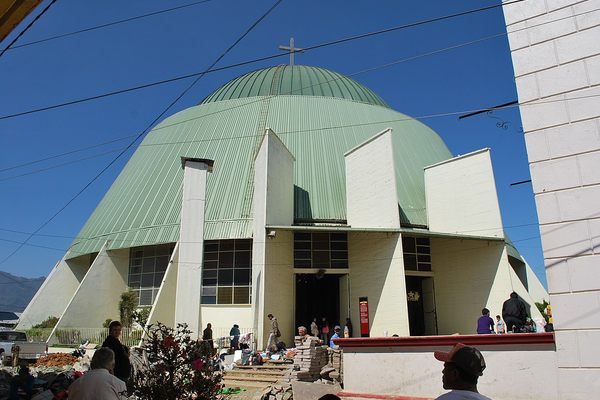About
Even without knowing its engineering history, you cannot fail to be impressed when looking up at the ceiling of this contemporary church in Torrelavega, Spain. The magnificent dome supporting the roof of the Iglesia de la Virgen Grande is a late example of a structural design method known as "graphic statics," which allowed the use of easy-to-produce bricks rather than steel and concrete.
The graphic statics method was developed in the 19th century, and was later adopted by Spanish architect Luis Moya Blanco in response to a shortage of materials following the Spanish Civil War. By the time this church was built in 1964, it was probably Blanco's love of the aesthetics of brickwork rather than economy that was driving the architectural process. But in any case, the result was a beautiful vaulted brick dome that rivals many of the structures found in medieval cathedrals, without being overengineered.
Blanco was responsible for the design of a number of other important Spanish buildings using this unique and antiquated method, his last project being as late as 1972. But the roof of the Iglesia de la Virgen Grande (Church of the Great Virgin) is arguably his most impressive. The rest of the church is also a fine example of contemporary design, and the artworks and stained glass are fantastic. The church is said to have been built on the footprint of the Tower of the Vegas, an ancient structure that gave the city its name.
Related Tags
Know Before You Go
There is an underground parking lot about 100 yards from the church.
Community Contributors
Added By
Published
June 26, 2019

























